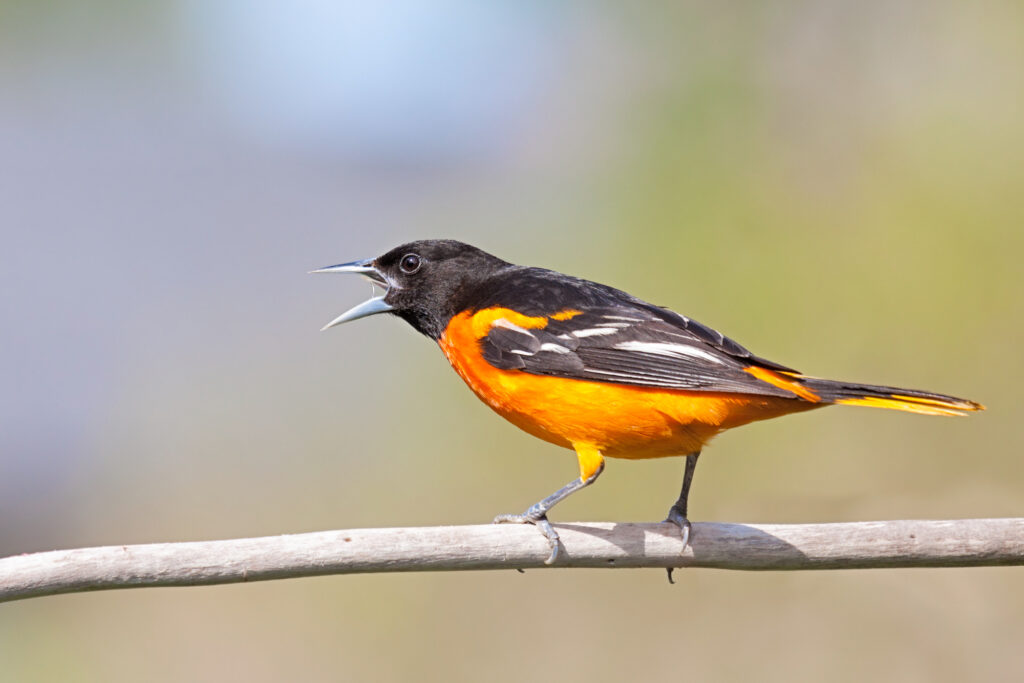New Jersey’s native new world blackbirds (and one non-native species) are often seen in the state. But these interesting species are often overlooked. If you are a keen birdwatcher, you should pay some attention to these birds.
Below, you will find out a little more about which blackbirds are seen in New Jersey, when you might see them, and how to identify the species you see.
Red-Winged Blackbird
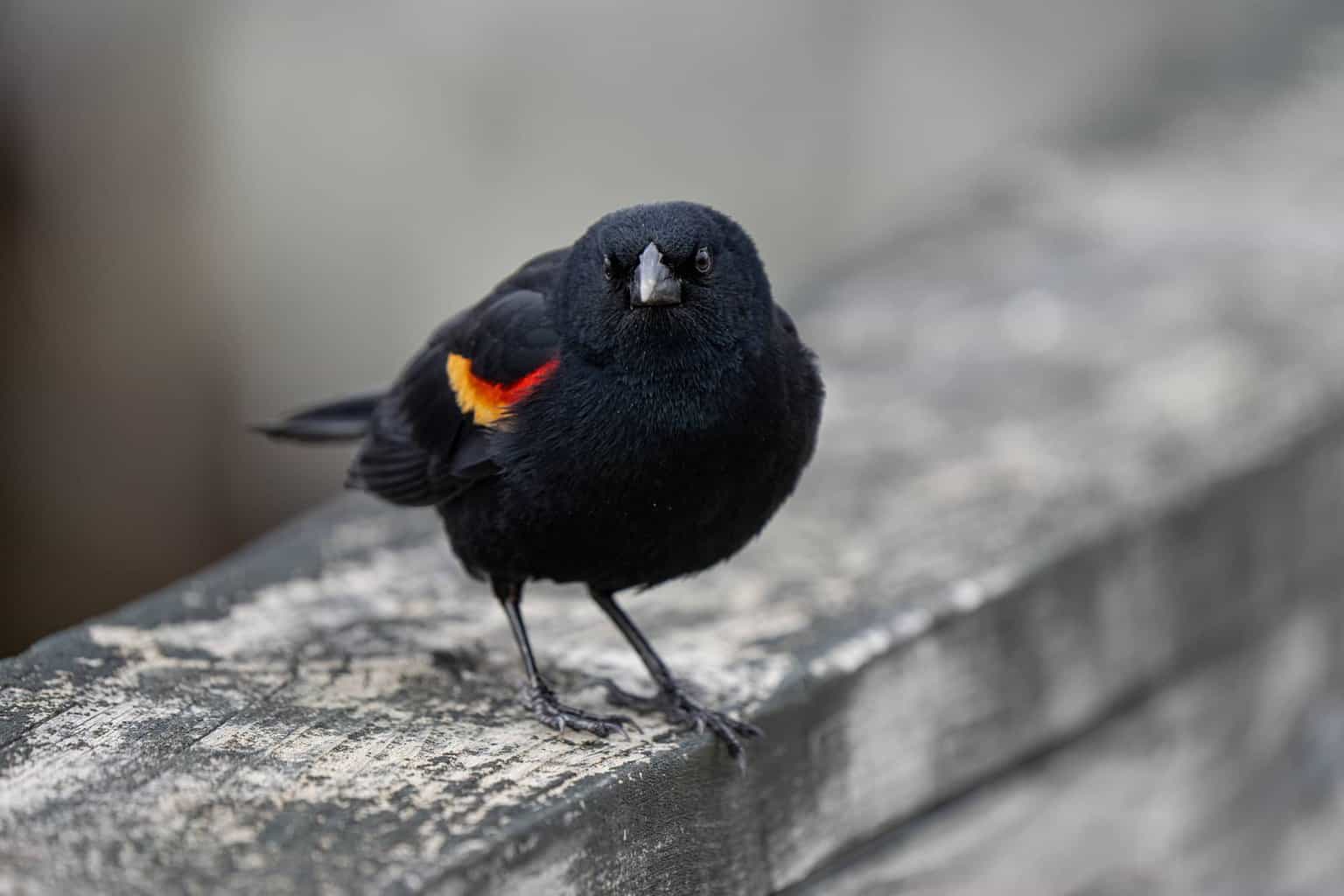
- Scientific Name: Agelaius phoeniceus
- Length: 6.7 – 9.1 in (17 – 23 cm)
- Weight: 1.1 – 2.7 oz (32 – 77 g)
- Wingspan: 12.2 – 15.8 in (31 – 40 cm)
Red-winged blackbirds are the most common blackbird seen in New Jersey during the summer months, and the second most frequently spotted in winter.
Many Red-winged blackbirds will migrate south for the winter but some will remain in the state throughout the colder months.
Even the most inexperienced of birdwatchers will find it easy to spot and identify male Red-winged blackbirds, with their glossy black coloration and vibrant patches of reddish-orange on their black wings.
The female birds are a little harder to identify, as they are less distinctive. Female Red-winged blackbirds are a streaky brown all over.
European Starling
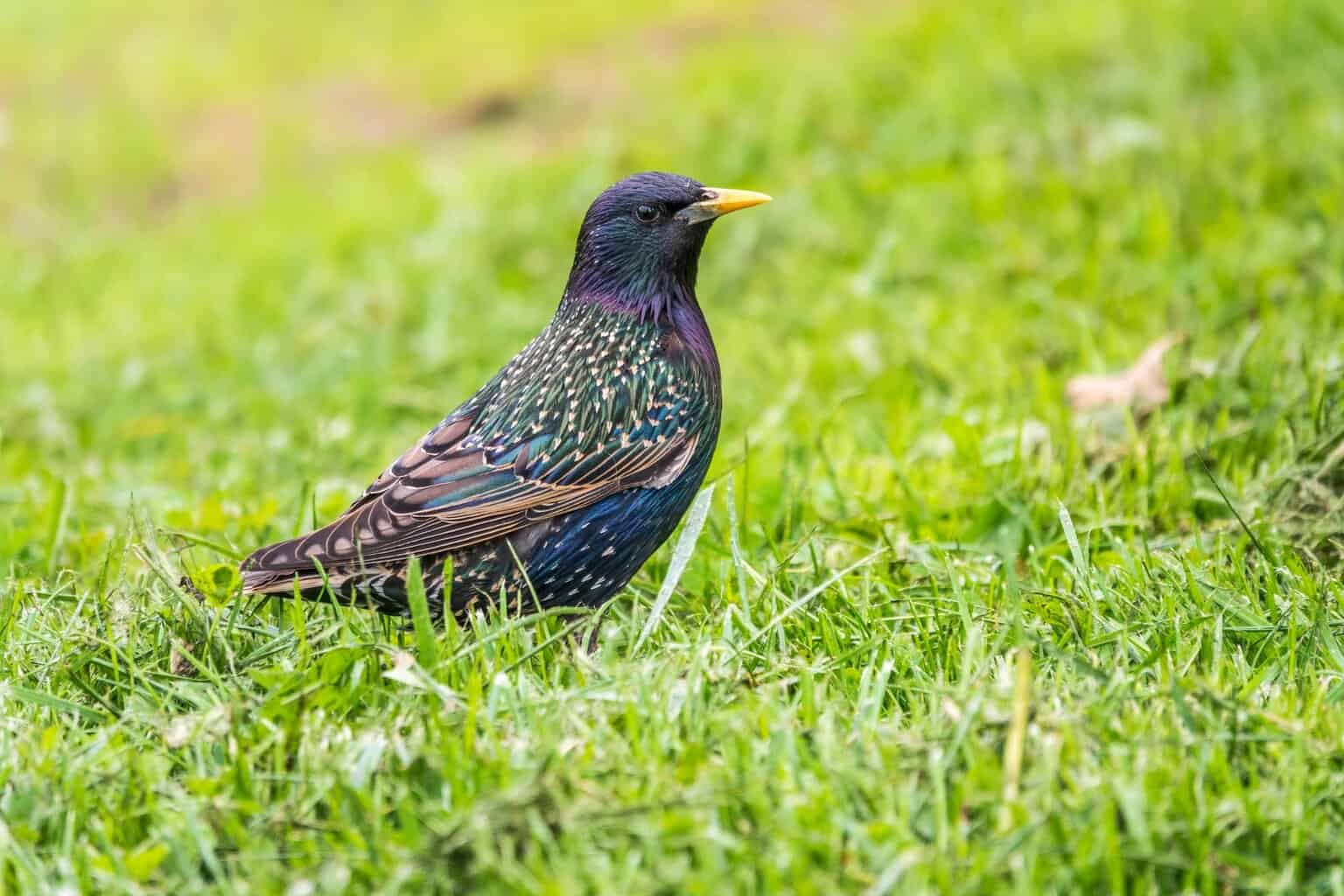
- Scientific Name: Sturnus vulgaris
- Length: 7.9 – 9.1 in (20 – 23 cm)
- Weight: 2.1 – 3.4 oz (60 – 96 g)
- Wingspan: 12.2 – 15.8 in (31 – 40 cm)
The only non-native on this list, the European starlings were introduced to the United States and have since become one of the nation’s most favorite songbirds with a musical song—European starlings are very beautiful.
European starlings are commonly seen in New Jersey, a little more often seen in the summer months but resident year-round.
The male and female birds look unremarkable, perhaps, from a distance. But up close, the European starlings’ plumage has sheens of green, blue, and purple.
European starlings also look amazing when they gather in large flocks and sweep in concert through the skies. However, European starlings are sometimes considered a pest!
Common Grackle
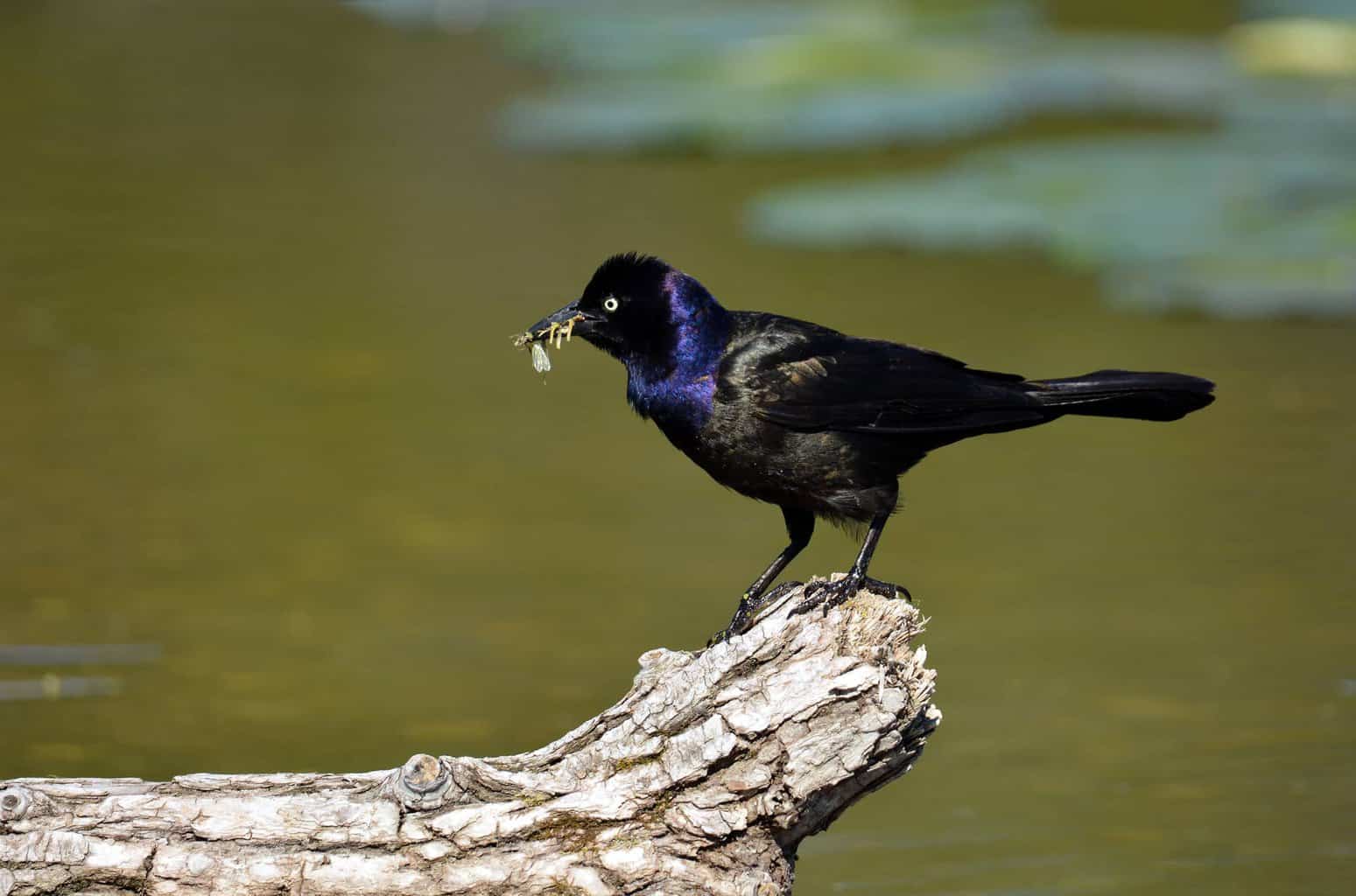
- Scientific Name: Quiscalus quiscula
- Length: 11.0 – 13.4 in (28 – 34 cm)
- Weight: 2.6 – 5.0 oz (74 – 142 g)
- Wingspan: 14.2 – 18.1 in (36 – 46 cm)
The Common grackle is considered to be a near-threatened species. But they are the second most commonly spotted blackbirds in New Jersey in the summer.
Even though most migrate south for winter, some remain here year-round, and they are the third most commonly spotted species during the winter months.
These are blackbirds a little taller and longer-tailed than other species. They have glossy black plumage, and the males have a little more sheen than the female birds.
Brown-Headed Cowbird
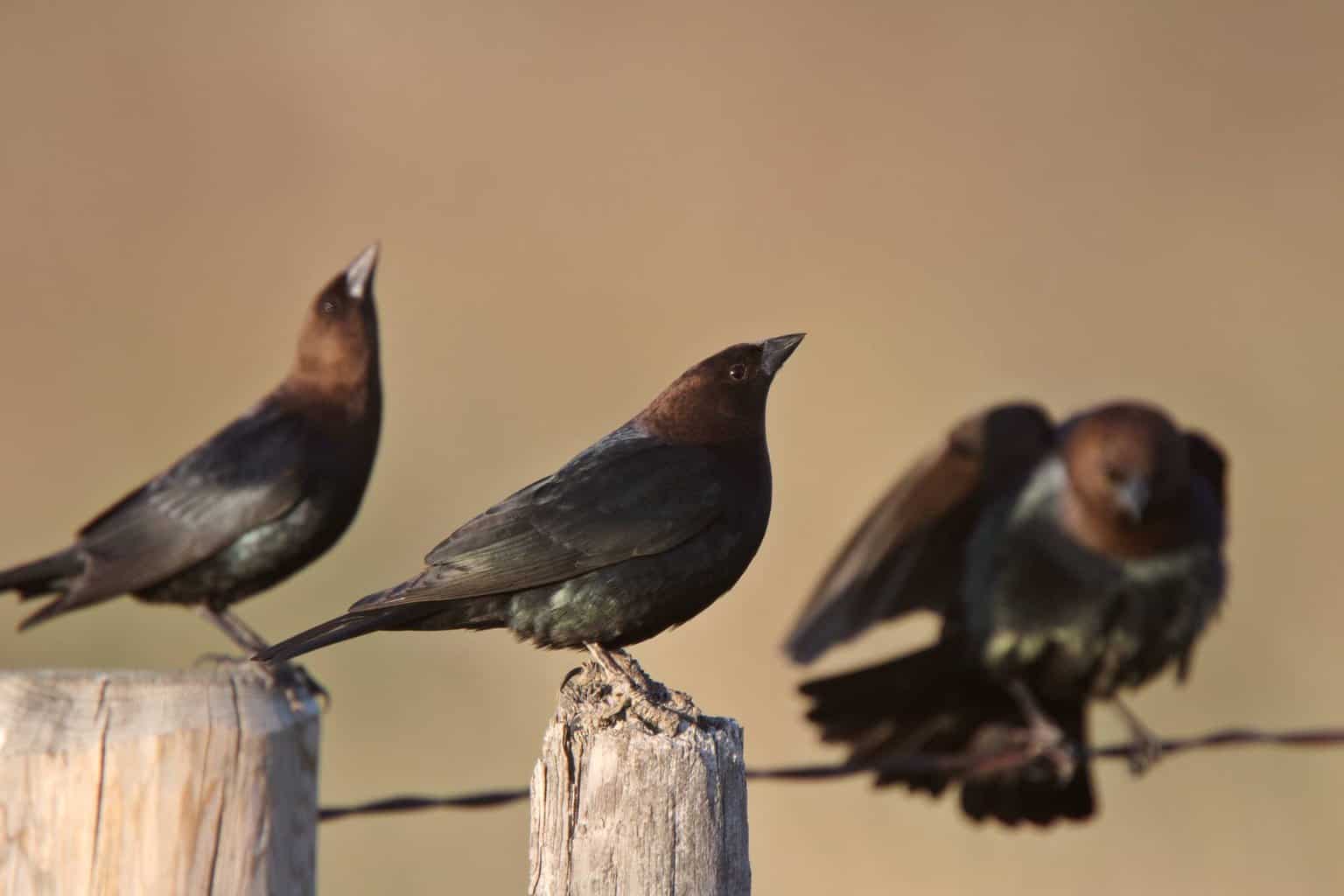
- Scientific Name: Molothrus ater
- Length: 76.3 – 8.7 in (19 – 22 cm)
- Weight: 1.3 – 1.8 oz (42 – 50 g)
- Wingspan: 14.2 in (36 cm)
The Brown-headed cowbird is most commonly spotted in New Jersey during the summer. These birds may arrive from February onwards, and most tend to depart in August.
However, some will remain here year-round so Brown-headed cowbirds can also be spotted in the state during the winter months.
The males are pretty easy to identify, with their glossy black bodies and brown heads. The female birds are slightly more nondescript, with streaky gray-brown feathers all over.
Baltimore Oriole
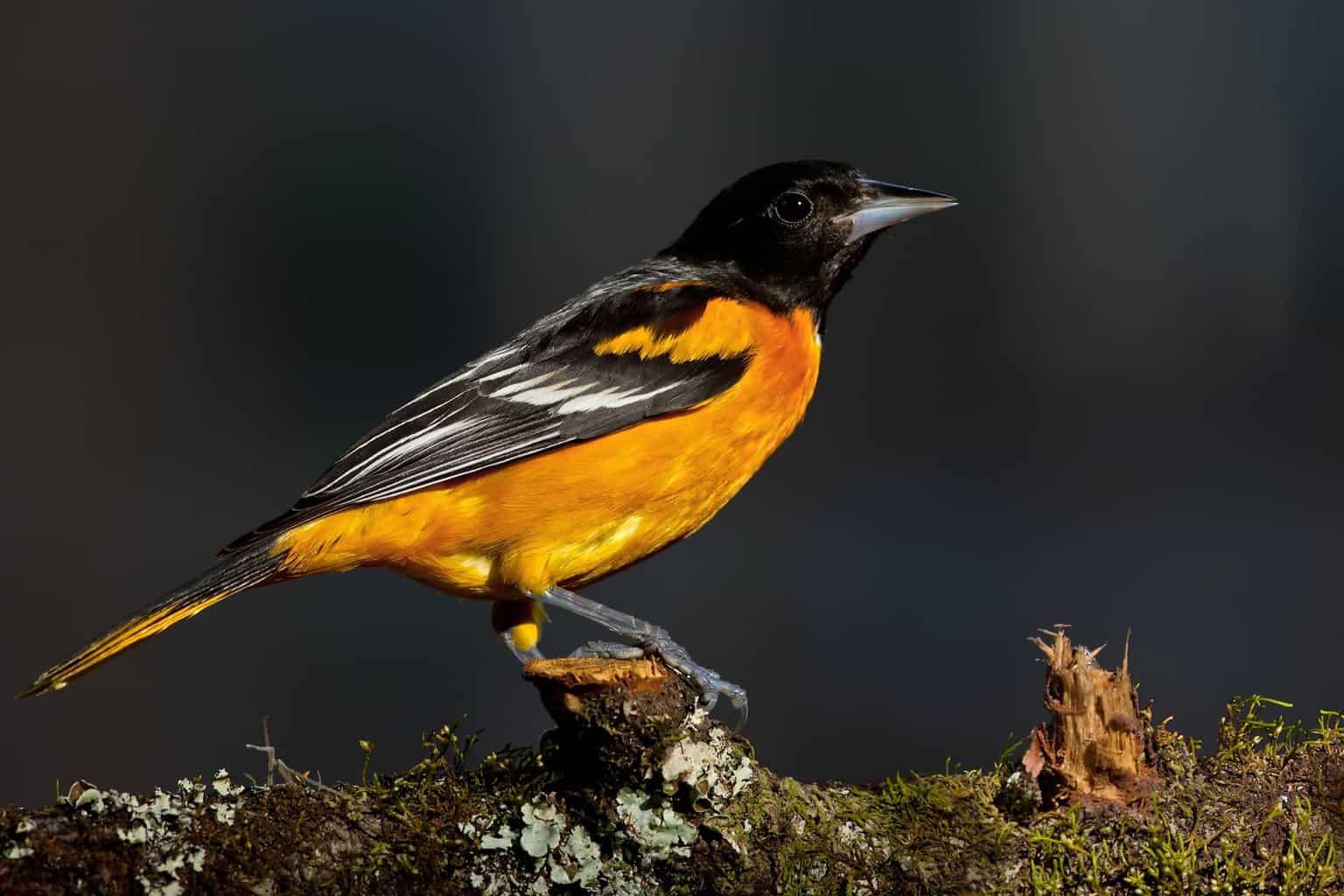
- Scientific Name: Icterus galbula
- Length: 6.7 – 7.5 in (17 – 19 cm)
- Weight: 1.1 – 1.4 oz (30 – 40 g)
- Wingspan: 9.1 – 11.8 in (23 – 30 cm)
Baltimore orioles are the fifth most commonly spotted blackbird in New Jersey in summer. Baltimore orioles typically spend the summer breeding in the state, arriving in May and departing in around September.
Baltimore orioles have on occasion been spotted here during the winter months—but this is considered to be pretty rare.
The male Baltimore orioles are orange and glossy black with black wings and white wing bars. The female birds have a yellow patch underneath and brownish-yellow on top, with grayish-brown wings.
These medium-sized blackbirds are around the size of a robin.
Boat-Tailed Grackle
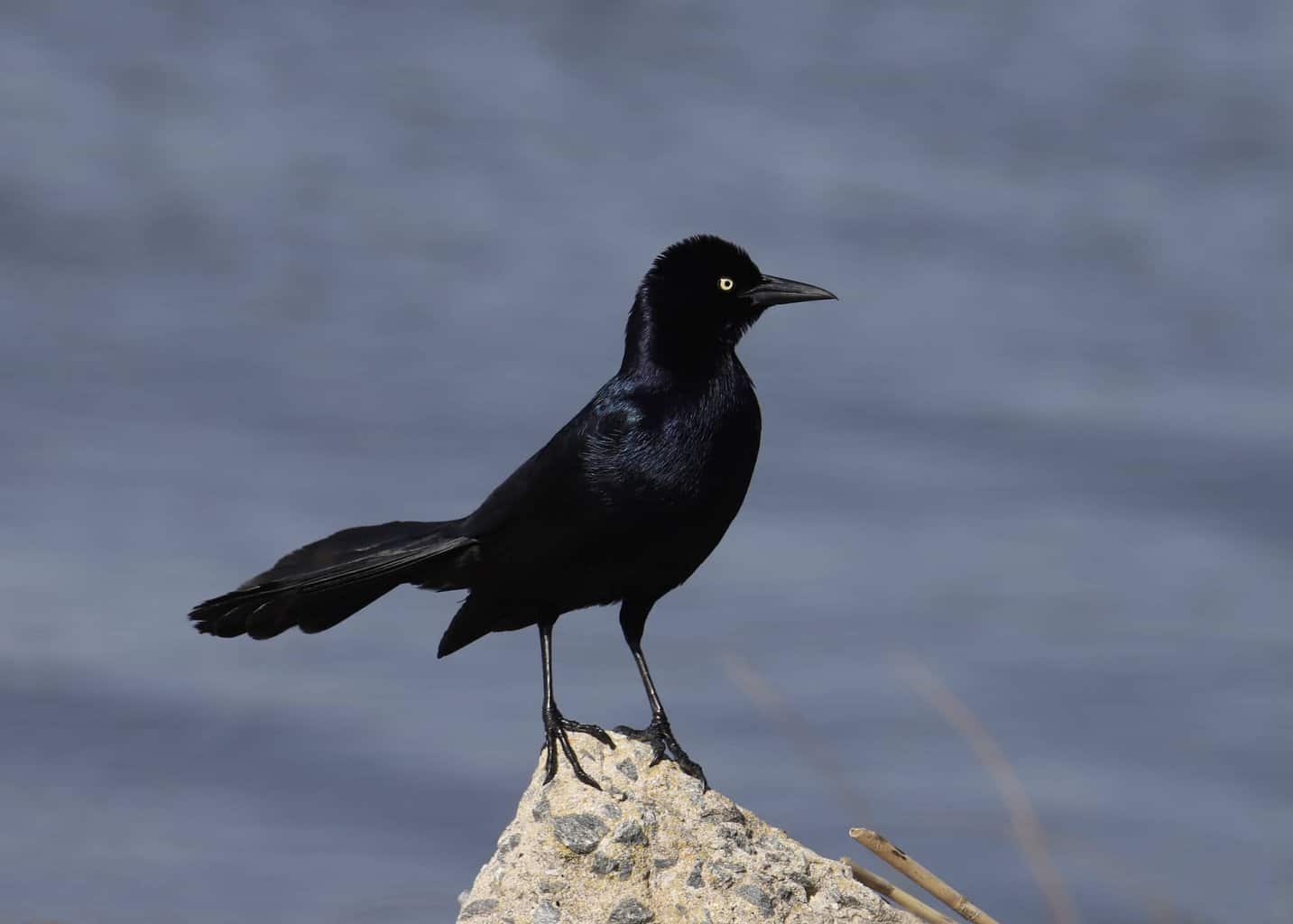
- Scientific Name: Quiscalus major
- Length: 10.2 – 14.6 in (26 – 37 cm)
- Weight: 3.3 – 8.4 oz (93 – 239 g)
- Wingspan: 15.3 – 19.7 in (39 – 50 cm)
Boat-tailed grackles are not particularly common in the state but can be spotted in the south of the state throughout the year, around the coast—somewhat more commonly in summer.
Boat-tailed grackle males are large and gloss black with long legs and long tails.
The female birds have brown coloration and are only about half the size of the males of the species—they’re about medium-sized blackbirds.
Orchard Oriole
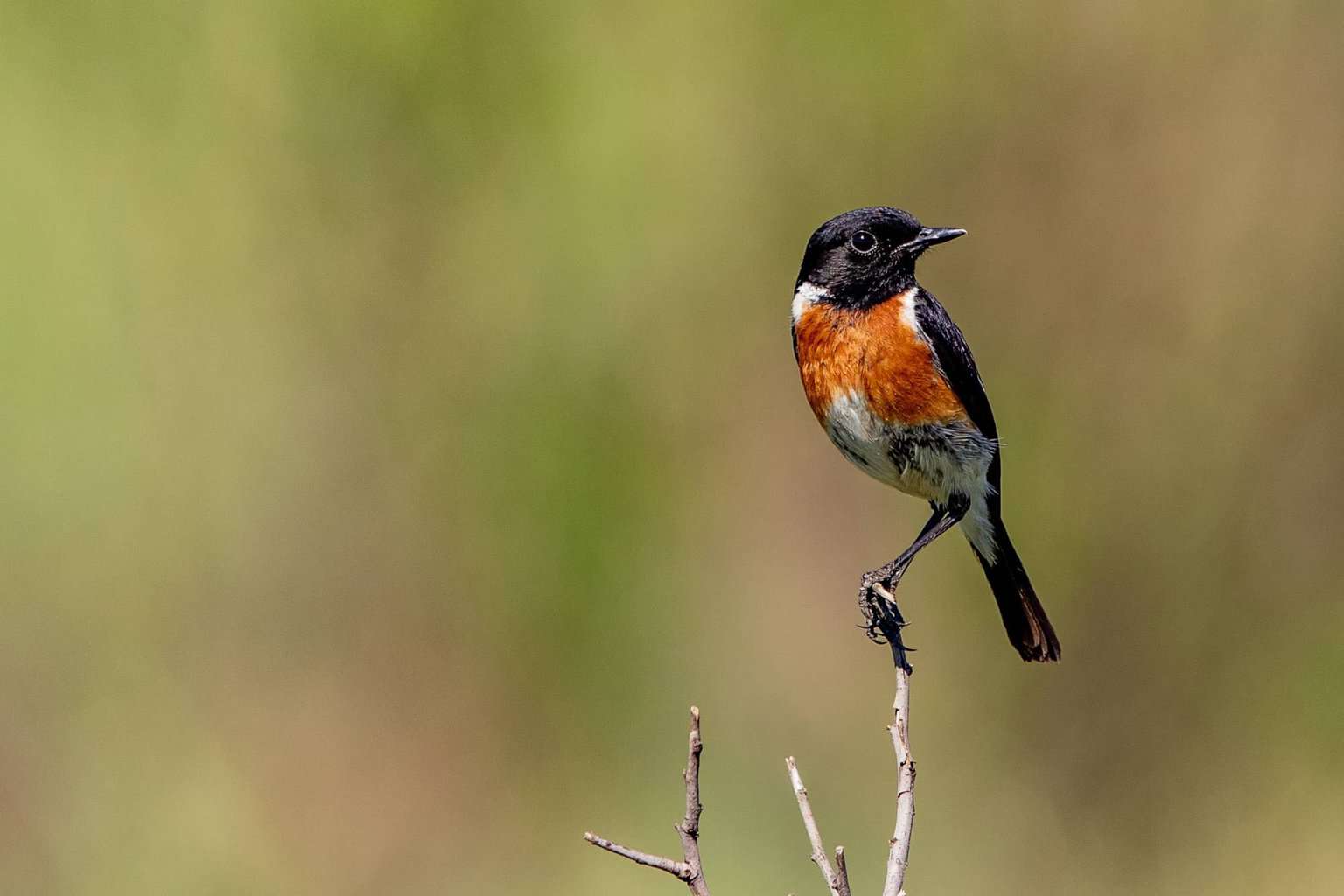
- Scientific Name: Icterus spurius
- Length: 5.9 – 7.1 in (15 – 18 cm)
- Weight: 0.6 – 1.0 oz (16 – 28 g)
- Wingspan: 9.8 in (25 cm)
Orchard orioles spend their summer breeding season in New Jersey. They typically begin to arrive as early as April and may remain until November.
However, Orchard orioles are most commonly seen here between May and August, so you stand the best chance of spotting them during this time.
You might spot Orchard orioles on hummingbird feeders, or feeding on fruit and berries growing in your garden.
The males and female birds of this species look very different. The female birds are greenish-yellow in hue, with darker wings with white wing bars. The males have black heads and backs and are a reddish color underneath. They are medium-sized blackbirds.
Bobolink
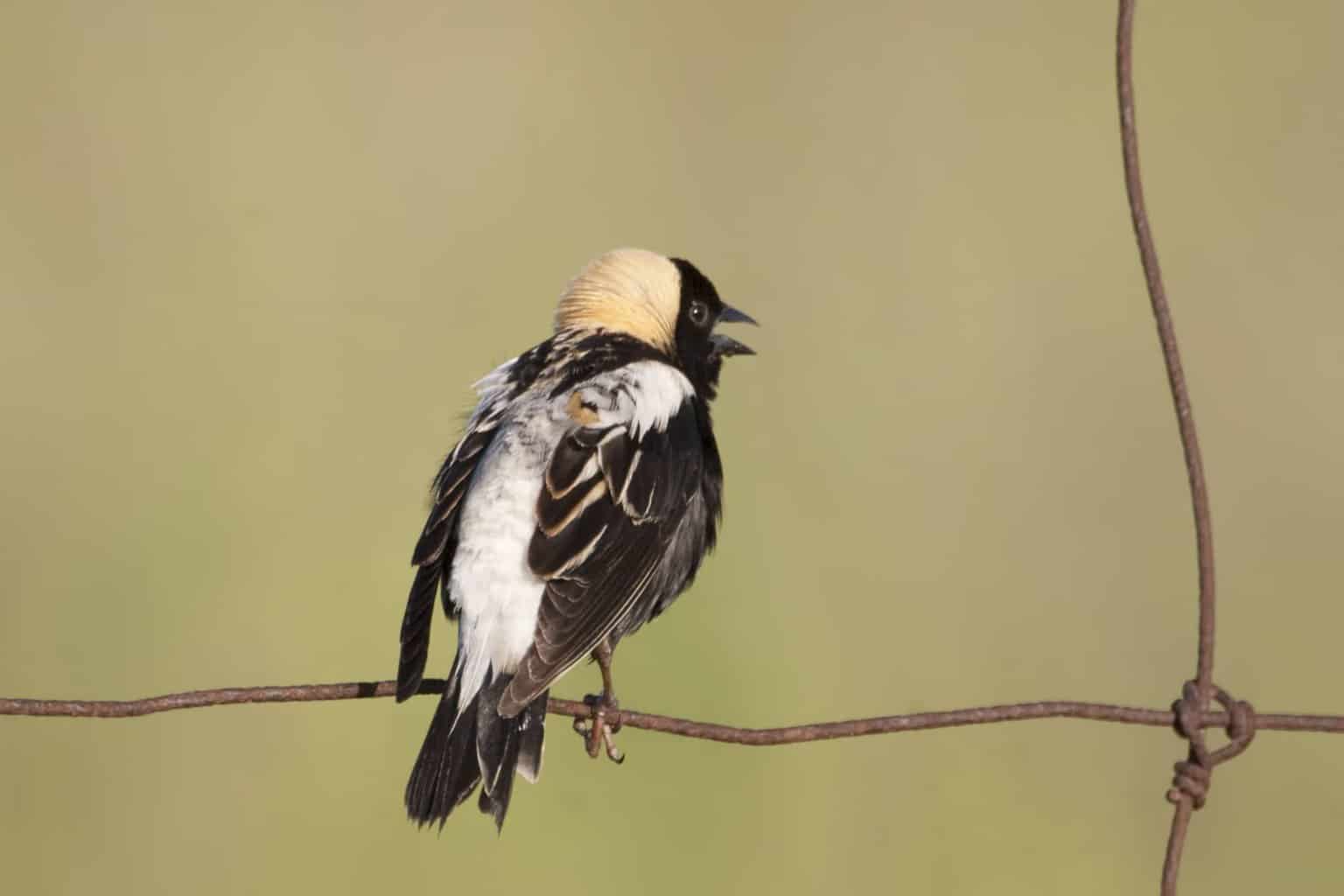
- Scientific Name: Dolichonyx oryzivorus
- Length: 5.9 – 8.3 in (15 – 21 cm)
- Weight: 1.0 – 2.0 oz (29 – 56 g)
- Wingspan: 10.6 in (27 cm)
Bobolinks are only seen in New Jersey during the spring and fall migration periods.
They may be seen heading north in spring but are most commonly sighted in August and September as they head south to their wintering grounds.
Bobolink males in their breeding plumage look very unusual and distinctive, with their shocks of yellow ‘hair’, white backs, and black bellies.
Non-breeding males and female birds are less impressive perhaps, mostly brown and streaky, with black marks around the eyes and on their crowns.
Eastern Meadowlark
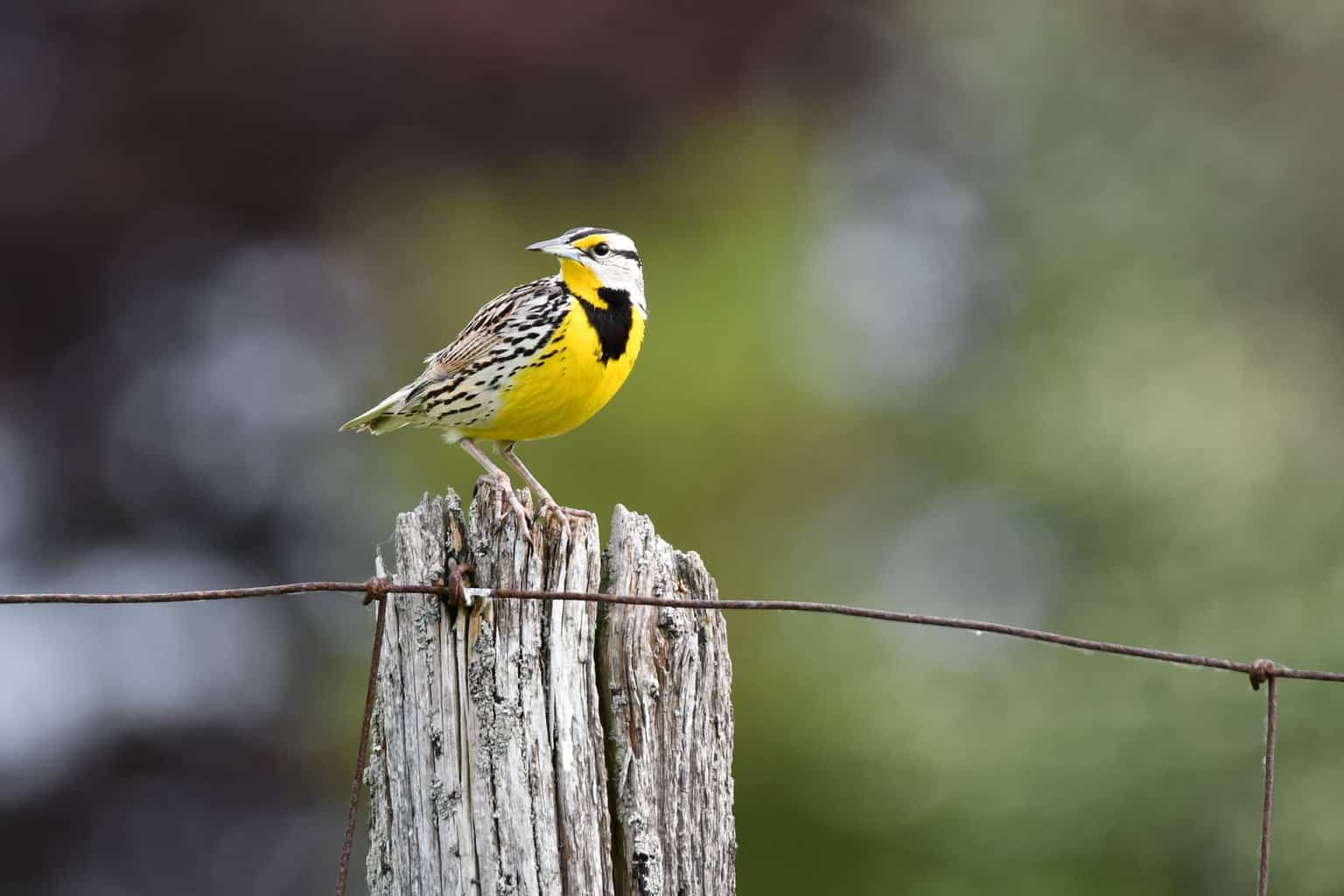
- Scientific Name: Sturnella magna
- Length: 7.5 – 10.2 in (19 – 26 cm)
- Weight: 3.2 – 5.3 oz (90 – 150 g)
- Wingspan: 13.8 – 15.8 in (35 – 40 cm)
Eastern meadowlarks are considered to be a near-threatened species. However, they are sometimes spotted in New Jersey and are known to be present in the state throughout the year.
These are medium-sized blackbirds known for their flute-like musical song. They have yellow bellies with distinctive black bands across their chests and brown and black backs.
Rusty Blackbird
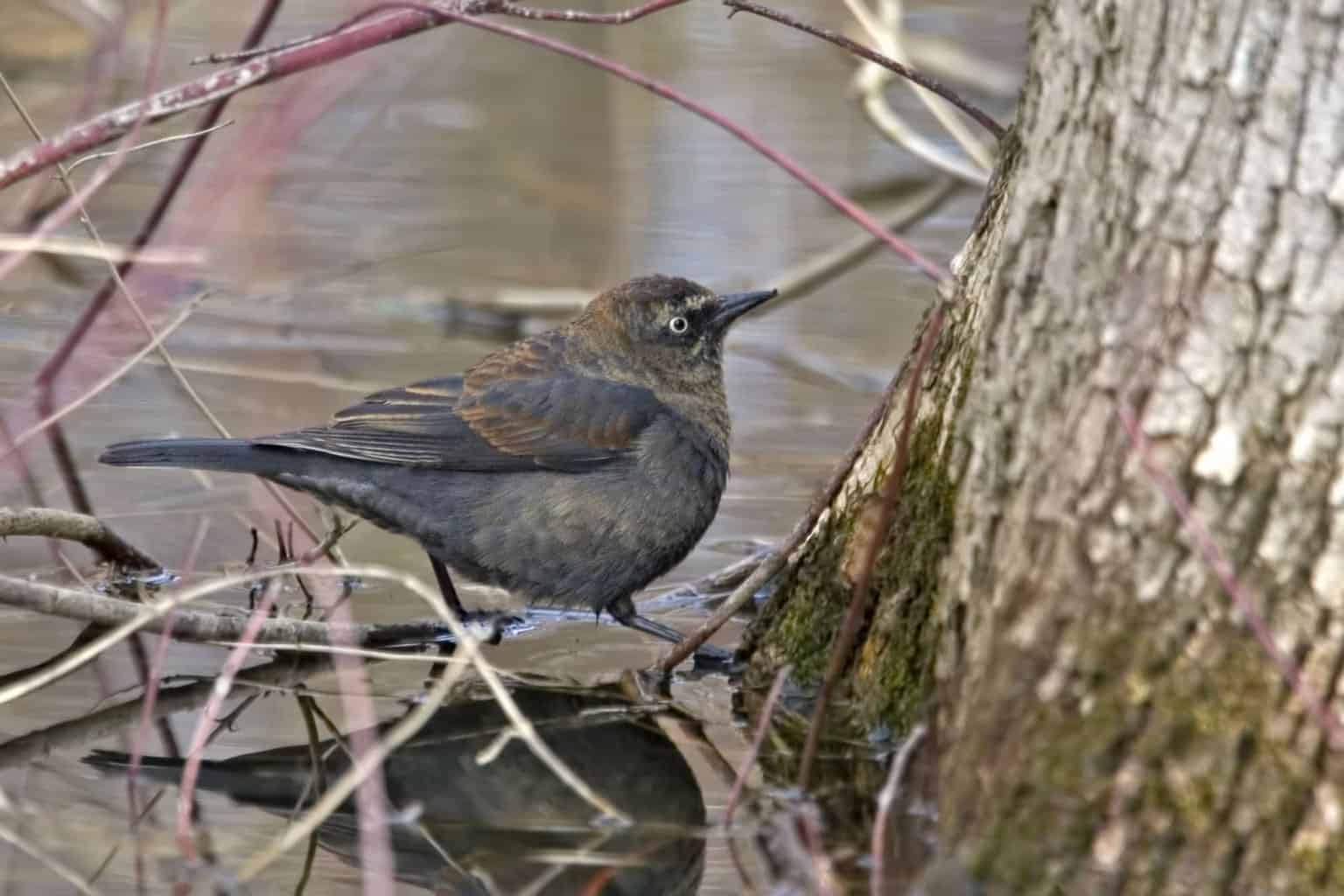
- Scientific Name: Euphagus carolinus
- Length: 8.3 – 9.8 in (21 – 25 cm)
- Weight: 1.7 – 2.8 oz (47 – 80 g)
- Wingspan: 14.6 in (37 cm)
The Rusty blackbird is sometimes seen here during winter, though this is considered to be a vulnerable species, whose numbers have declined precipitously in recent decades.
The Rusty blackbird arrives in August and may remain until May. But the best chance to see this blackbird is between October and April.
During its time in the state, the male Rusty blackbird will have shed its breeding plumage of glossy black and will have taken on a ‘rusty’ appearance.
Female birds also have a rusty tinge, but are mostly grayish-brown in color, with some darker markings around their eyes and on their crowns.
Yellow-Headed Blackbird
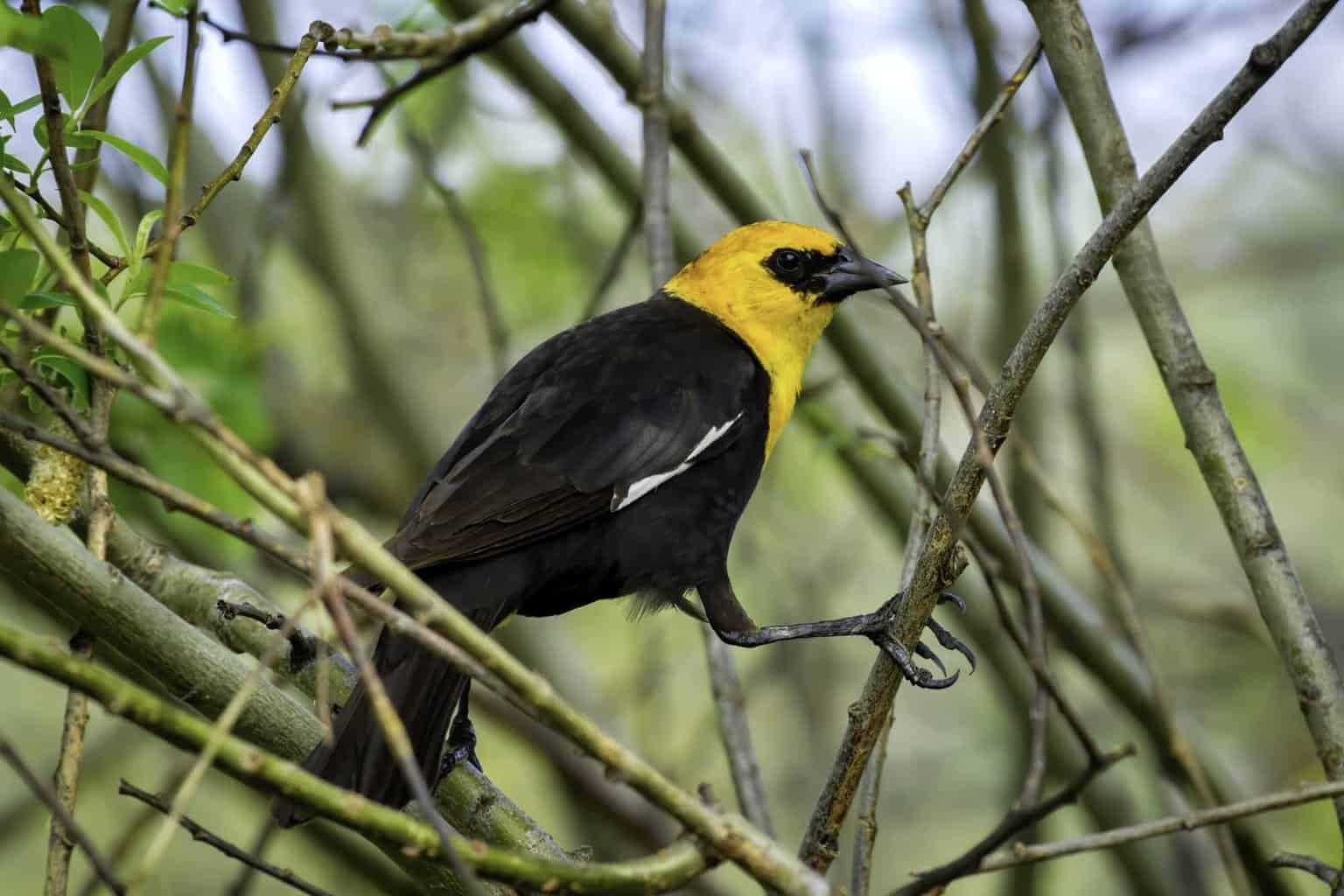
- Scientific Name: Xanthocephalus xanthocephalus
- Length: 8.3 – 10.2 in (21 – 26 cm)
- Weight: 1.6 – 3.5 oz (44 – 100 g)
- Wingspan: 16.5 – 17.3 in (42 – 44 cm)
Yellow-headed blackbirds are only spotted very rarely in New Jersey.
However, Yellow-headed blackbirds are recognized as a regularly occurring species here and can occasionally be sighted in the state year-round.
The males have glossy black bodies and black wings, white wing patches, and bright yellow heads. The heads of the female birds are a bit duller, and the rest of their bodies are brown.
Concluding Thoughts
Occasionally, other vagrants or accidental blackbird sightings include sightings of Bullock’s Oriole, Brewer’s Blackbird, and Western Meadowlark. But the birds on the list above are those that you are most likely to see in New Jersey.

